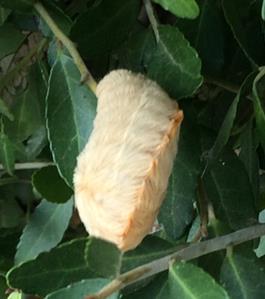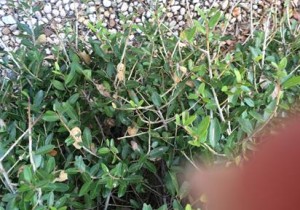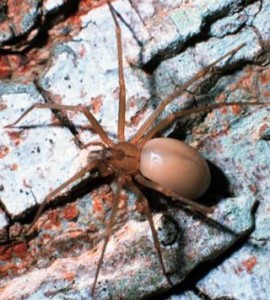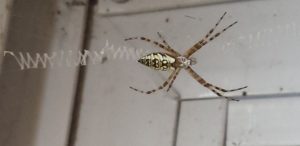Be on the Watch for Asps!

ClHalloween Pests on the Moveose up of puss caterpillar aka ASP. Image by Martha Cray
Puss caterpillars, AKA Asps have been spotted this season in south TX! Be on the lookout and be careful if you encounter them.
These fuzzy, almost cute, little caterpillars can inflict a nasty sting without provocation. Hidden inside the fuzzy façade, are venomous spines that result in a painful rash or “burn”. They are not aggressive caterpillars, and stings often occur when individuals accidentally brush up against them, or curious children pick one up to check it out.
The moth they will become is generally called a flannel moth. They get their name because they are also fuzzy, although they are not venomous like their immature form.
Fall is often a common time to see Asps and they can be found in large numbers, congregating in shrubbery and/or trees.
If you have a population of asps, you may consider treating the plant with Spinosad or permethrin to avoid the risk of being stung. To help educate your staff about this pest:
• Asps and other Stinging Caterpillars (Insects in the City Blog: Dr. Mike Merchant)
• IPM Action Plan for Stinging Caterpillars
• Stinging Caterpillars (Bug Biz: Pest Management and Insect ID Series, LSU)
Finally I would like to share some information from one of our Emeritus Professor and Extension Entomologist Dr. Roy D. Parker, who recently helped out with a school that has been fighting these pesky creatures.
- It does not seem practical to spray large numbers of trees due to cost and other difficulties involved. It may be practical to treat small shrubs if the caterpillars are found feeding on that type plant. (See the IPM Action plan or Dr. Merchant’s blog for control measures)
- My suggestion would be for the younger children to avoid the area, if practical, for the next month so as to cut down on potential exposure.
- These caterpillars show up nearly every year in fairly high numbers and create concern at schools as you indicated.
- Finally, I suggest some of the caterpillars be captured and placed in classrooms (feed them host plant leaves) so the students can learn about their life cycle and the adults. This could actually help in the future if everyone knows what they are (Asps) they will learn to appreciate them.
Spooky Spiders
Spiders may be on the mind with Halloween around the corner. But spiders are most likely to be spotted during the fall, in my opinion.
It is important to remember that there are many different species of spiders in Texas, but only the recluse and widow spiders have venom that is harmful to humans.
Every spider has fangs and can bite, and while it may be painful, your reaction should be minor.
Common, harmless spiders, you will likely encounter this fall are wolf spiders, kite spiders, green lynx spiders and
Argiope or zipper spiders the most photographed spider!
Recluse spiders are small brown spiders with a fiddle on the back. They are no larger than a quarter with the legs stretched out. Recluse spiders are found in cluttered, undisturbed areas such as attics, storage closets, and sheds. They are also commonly brought down into the home from the attic when holiday decorations are moved in, so be careful when handling wreaths and artificial Christmas trees if you know you have had a recluse problem in the past. In schools we commonly see these spiders in bus barns, athletic storage rooms, and other dark undisturbed places.
Widow spiders are black, shiny, and have an orange to red hour glass on their abdomen. They are also found in undisturbed areas or under debris such as rocks and firewood. Often in schools, we see these spiders located around awnings, brick ledges, and other areas cluttered undisturbed areas.
To help educate your staff about spiders check out these links
• IPM for Spiders in Schools, University of Florida School IPM website
• Bug Proof Your Home from Venomous Spiders
• Want to see a variety of images of Texas Spiders visit this website




 .
.